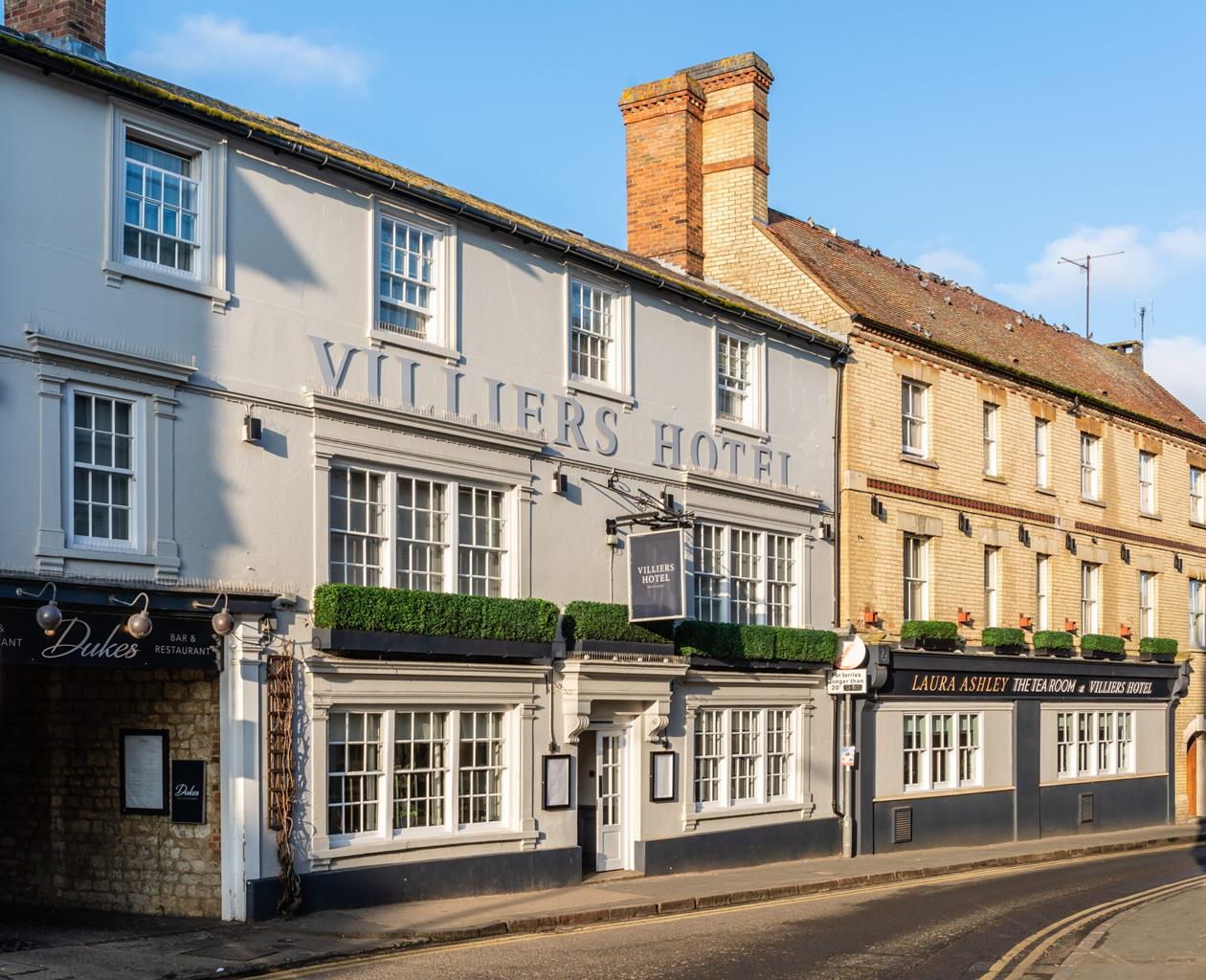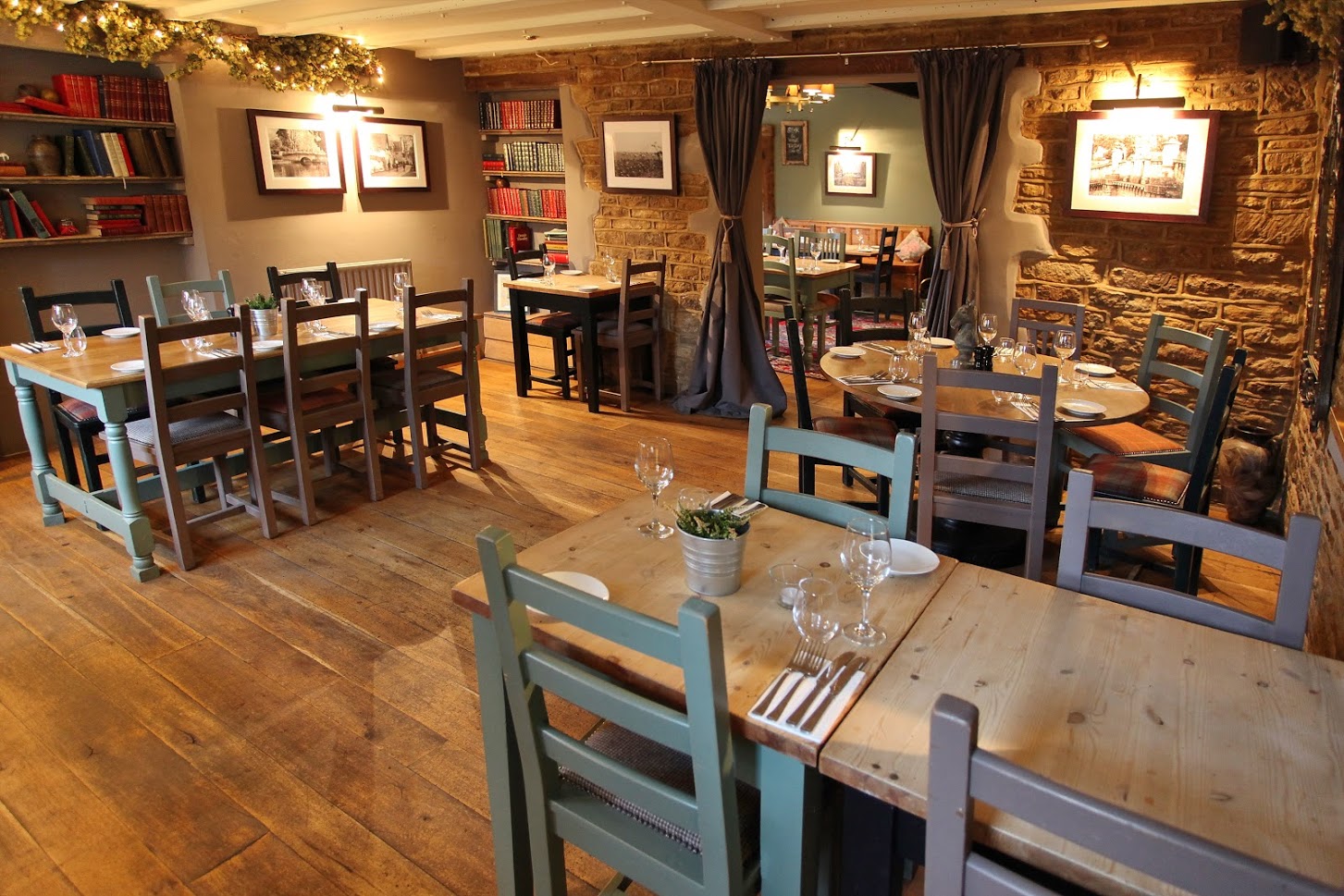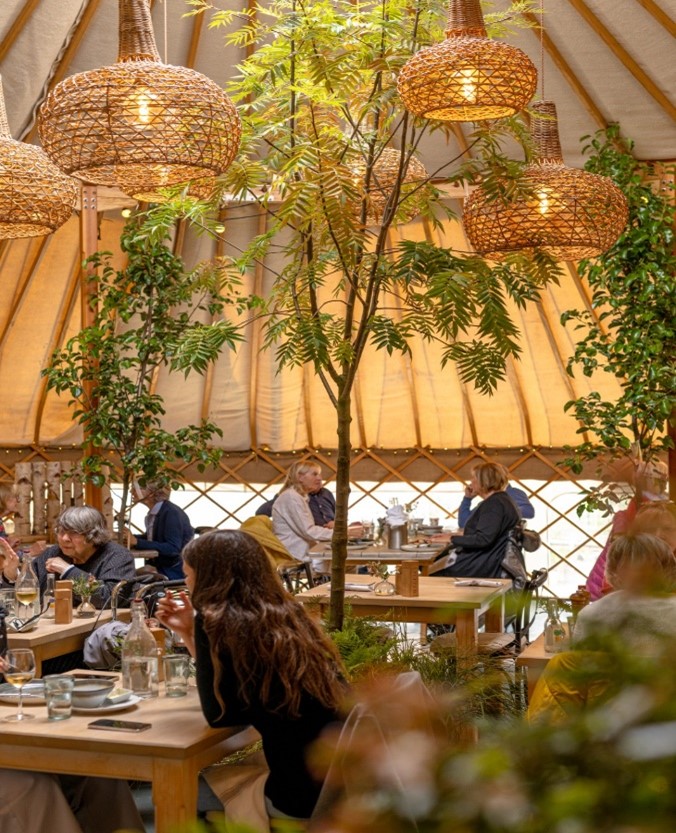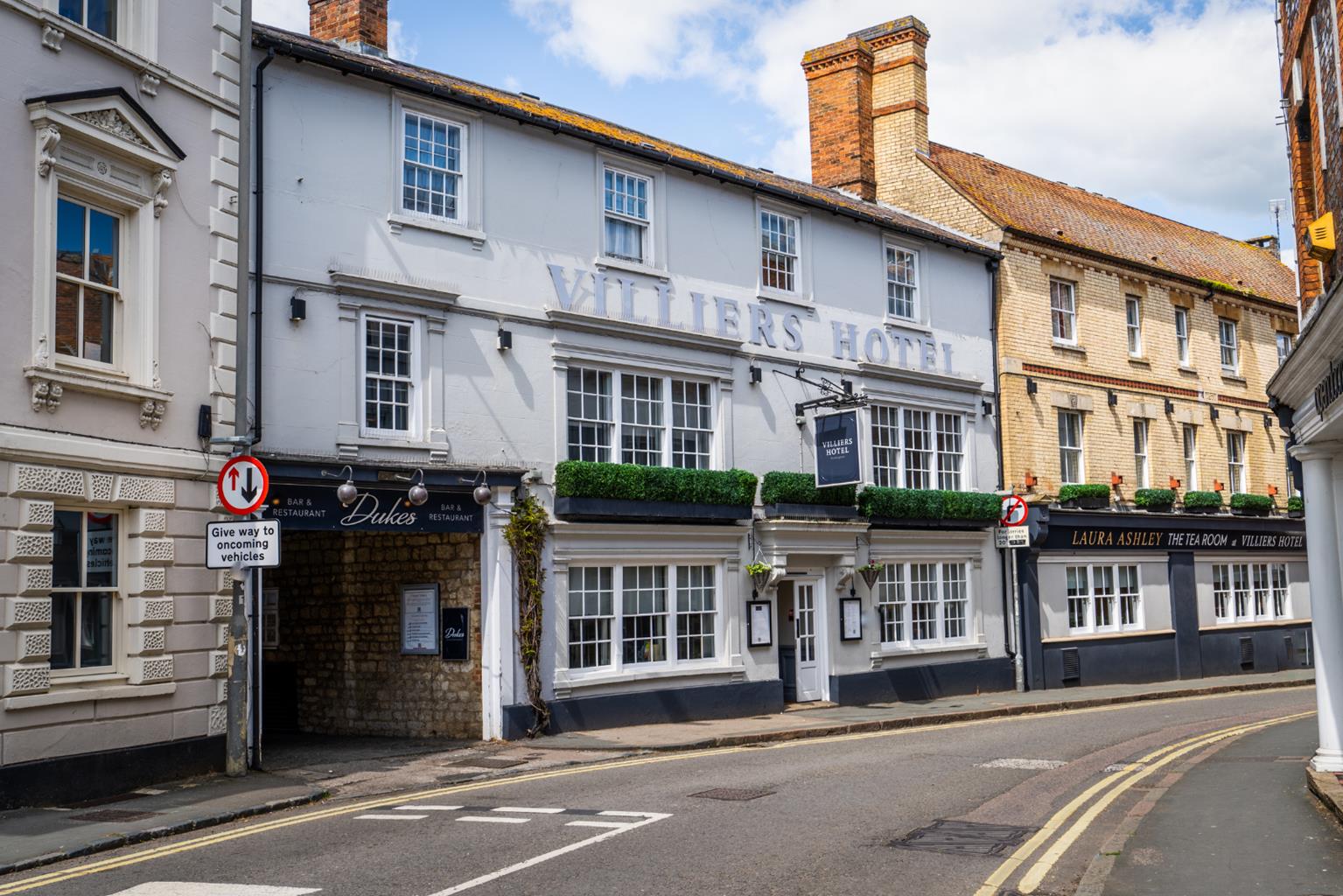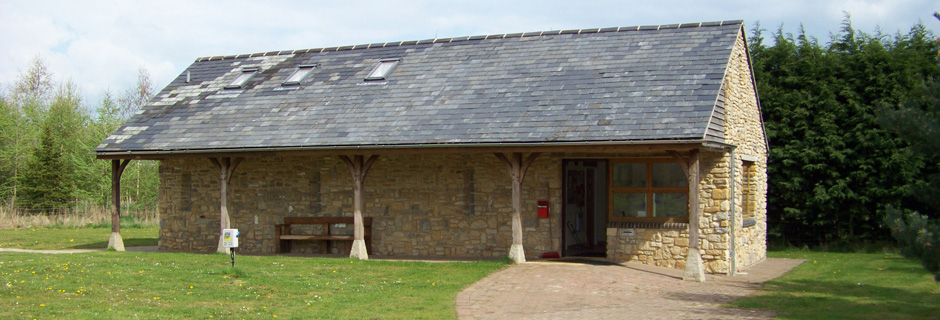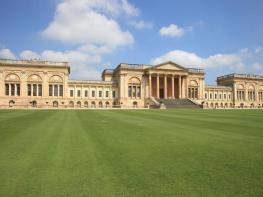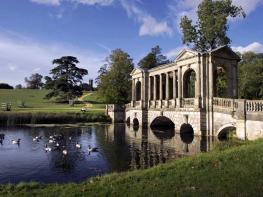Guests can enjoy a town centre location with a high degree of comfort at this 400-year-old…
Exploring Stowe Park

4.5 miles (7.2kms)
About the walk
Stowe has been described as England's greatest work of art and possibly the world's most bewitching landscape garden. But how did it all begin? It was Sir Richard Temple (1634–97), one of Marlborough's generals and described as 'the greatest Whig in the army', who first built a brick mansion here. Work eventually came to an end in 1839 when Stowe's then owner, the 2nd Duke of Buckingham, a descendant of Lord Cobham, suffered financial problems and was declared bankrupt.
Temple's son (1669–1749, also Sir Richard) married a wealthy brewery heiress, became Lord, and later Viscount Cobham and began to extend the house and park. He prided himself on his reputation as a great radical – anti-Stuart and pro-liberty, greatly endorsing the ideals of the Glorious Revolution. Work on the gardens at Stowe started in 1711, but it wasn't until Lord Cobham fell out with George II and his Prime Minister, Robert Walpole, that the idea of an experiment in 'moral gardening' really seized him.
Cobham threw himself wholeheartedly into the project. His aim was to create a garden of ideas; a place symbolising the notion of liberty. Historians maintain that Cobham was attempting to rewrite the history of Britain, using buildings and landscape.
Many hands
In 1713 Stowe employed only half a dozen garden staff, but five years later there were almost 30 gardeners. Work at Stowe became a way of life, and so anxious was Cobham for the momentum not to be broken that, when his head gardener Edward Bissell broke his leg, he called for a specially adapted chair so that Bissell could continue to work.
In total, Cobham designed eight lakes, constructed more than three dozen temples, and commissioned 50 statues and 40 busts. The country's finest artists and designers, including James Gibbs, William Kent and Sir John Vanbrugh, were employed to help create what James Thomson described as 'the fair majestic paradise of Stowe'. Even Lancelot 'Capability' Brown had a hand in it, beginning his career here in 1741.
Lord Cobham's successors consolidated his work by improving and adding to the garden. However, by the mid-19th century, the family fortunes had ebbed away and the estate was sold. After a further sale in 1921, Cobham's vision of an earthly paradise, described by Alexander Pope as 'a work to wonder at', was left virtually empty. The house became a school and the National Trust acquired the garden in 1989.
Walk directions
Walk through Chackmore, pass the Queen’s Head pub and continue through the village. At the speed de-restriction signs, keep ahead for a few paces and look for a path on the left. Aim diagonally right in the field, passing under power lines. Make for a stile and waymarker beneath the branches of an oak tree in the corner.
Cross the field straight ahead, towards a gate and stile, beyond which is a plank bridge. Keep skirting the boundary of the field to the right all the way to the top far corner. Look left to see the Corinthian Arch at Stowe Park. Go through a kissing gate beside a galvanised gate and join a path. To the right is a fine view of Stowe Castle. Pass under telegraph wires and look for a gap and waymark ahead. Walk ahead and cross a footbridge over water. Cross the next field.
At the bottom of the field, cross a bridge over a stream and through a gate go into the field and head up the slope, keeping to the left of a house up above. As you climb the slope, the Gothic Temple can be seen to the left. Pass the former Lamport Lodge house, by grand (disused) gates, go through a galvanised gate and continue ahead. The Bourbon Tower is clearly visible over to the right. To the left is Lord Cobham’s Pillar. Pass over a stile and continue ahead towards a distant obelisk commemorating the Duke of Buckingham. Merge with another path and keep a sports ground on your right.
Make for a gate leading out to the left of an avenue of trees running down towards the Grecian Valley (only Stowe ticket holders may enter this area). Cross over and follow the track on the right-hand side of the ha-ha up to a clump of trees. Bear left here and follow the wide, straight metalled road, part of a Roman road. Pass the magnificent façade of Stowe School and keep along the main drive. On reaching the Boycott Pavilions, branch off half left along a track to a stile by a cattle grid and a sign for the Corinthian Arch. Down below lies the Oxford Water, crossed by a splendid 18th-century stone bridge.
Follow the drive through the parkland with glimpses of temples and classical designs. The drive eventually reaches the Corinthian Arch. Line up with the arch and pause here to absorb the breathtaking view of Stowe School, surely one of Britain’s stateliest vistas. Walk down the avenue to the road junction, swing left and return to Chackmore.
Additional information
Field paths, estate drives, stretches of road, 2 stiles
Farmland and parkland
Under control across farmland, on lead within Stowe Park
OS Explorer 192 Buckingham & Milton Keynes
On-street parking in Chackmore
Stowe Landscape Garden
WALKING IN SAFETY
Read our tips to look after yourself and the environment when following this walk.
Find out more
Also in the area
About the area
Discover Buckinghamshire
Buckinghamshire is a land of glorious beech trees, wide views and imposing country houses. Victorian Prime Minister Benjamin Disraeli savoured the peace and tranquillity of Hughenden Manor, while generations of statesmen have entertained world leaders at Chequers, the Prime Minister’s rural retreat. Stowe and Waddesdon Manor are fine examples of even grander houses, set amid sumptuous gardens and dignified parkland.
The Vale of Aylesbury is a vast playground for leisure seekers with around 1,000 miles (1,609km) of paths and tracks to explore. Rising above it are the Chiltern Hills, a designated Area of Outstanding Natural Beauty covering 308sq miles (798sq km). They are best appreciated in autumn, when the leaves turn from dark green to deep brown. In the southeast corner of the Chilterns lie the woodland rides of Burnham Beeches, another haven for ramblers and wildlife lovers. Although the county’s history is long and eventful, it’s also associated with events within living memory. At Bletchley Park, more than 10,000 people worked in complete secrecy to try and bring a swift conclusion to World War II. Further south, an otherwise unremarkable stretch of railway line was made infamous by the Great Train Robbery in the summer of 1963.
Nearby stays
Restaurants and Pubs
Nearby experiences
Recommended things to do
Why choose Rated Trips?
Your trusted guide to rated places across the UK
The best coverage
Discover more than 15,000 professionally rated places to stay, eat and visit from across the UK and Ireland.
Quality assured
Choose a place to stay safe in the knowledge that it has been expertly assessed by trained assessors.
Plan your next trip
Search by location or the type of place you're visiting to find your next ideal holiday experience.
Travel inspiration
Read our articles, city guides and recommended things to do for inspiration. We're here to help you explore the UK.

